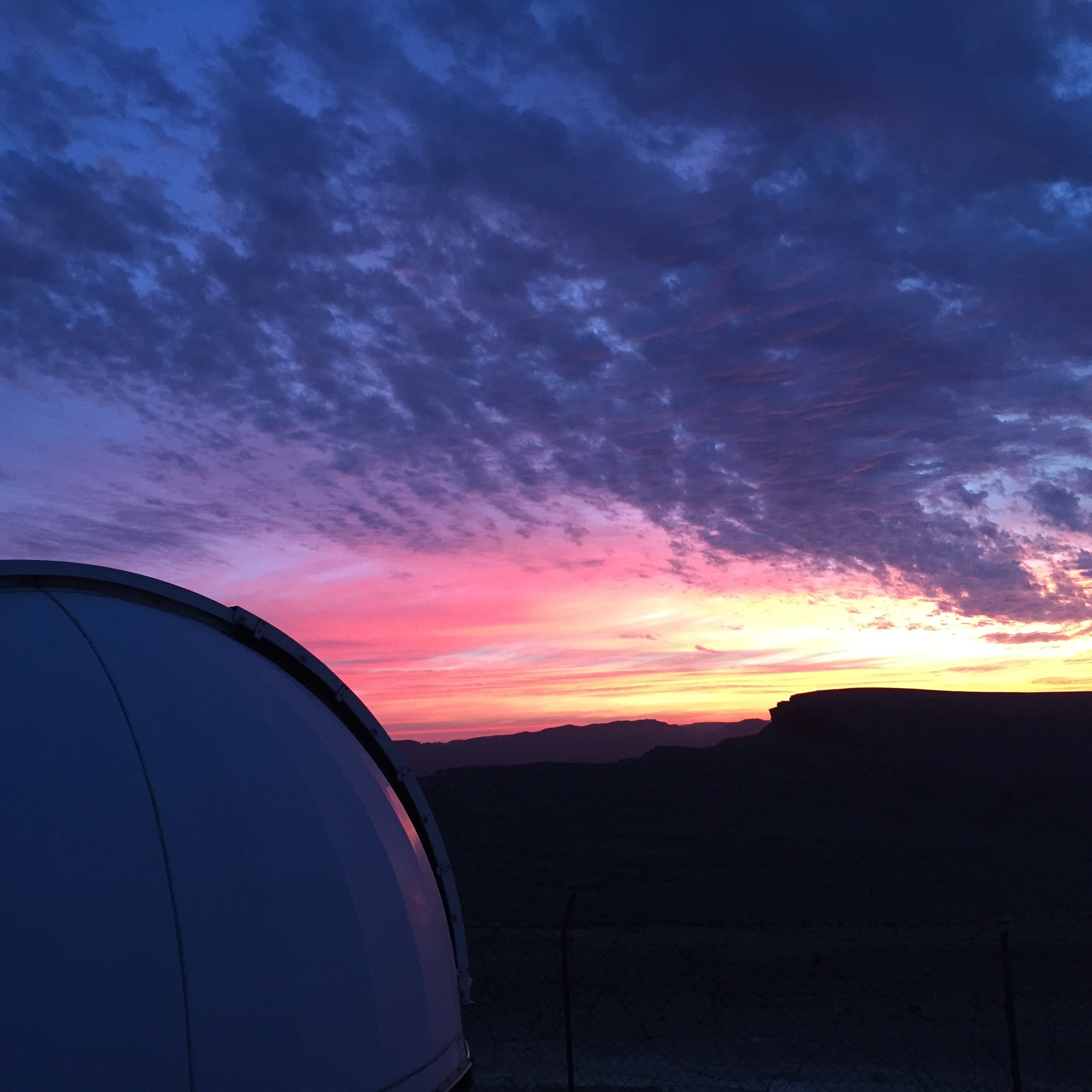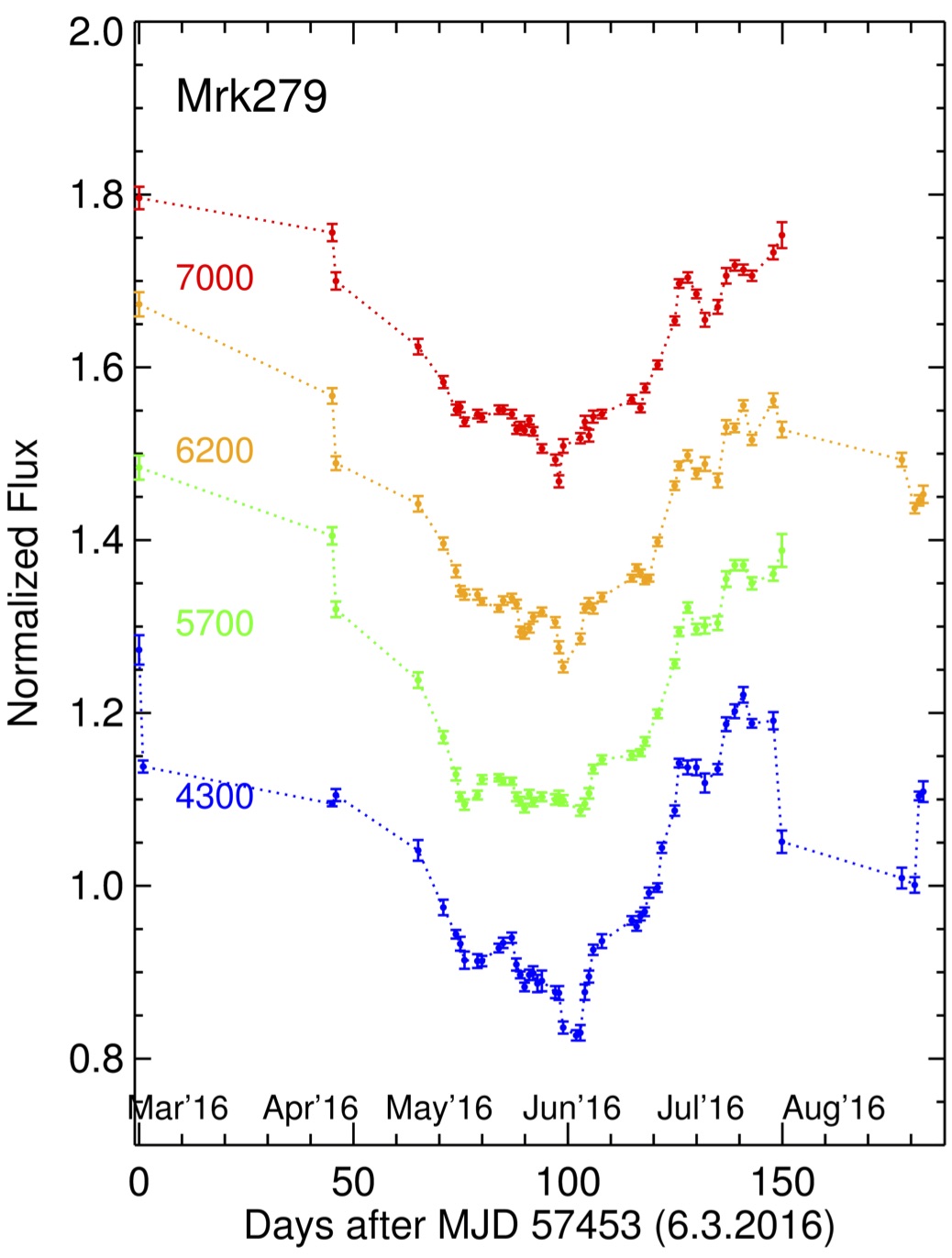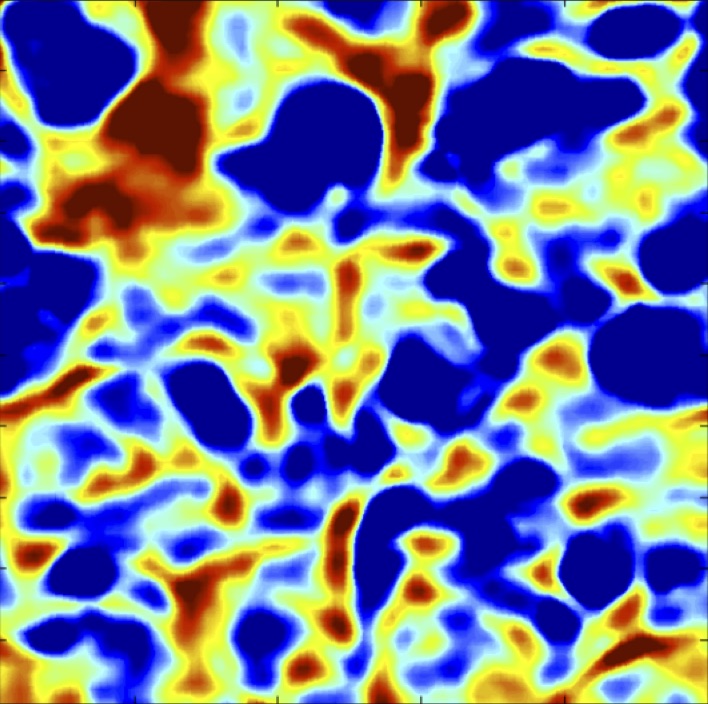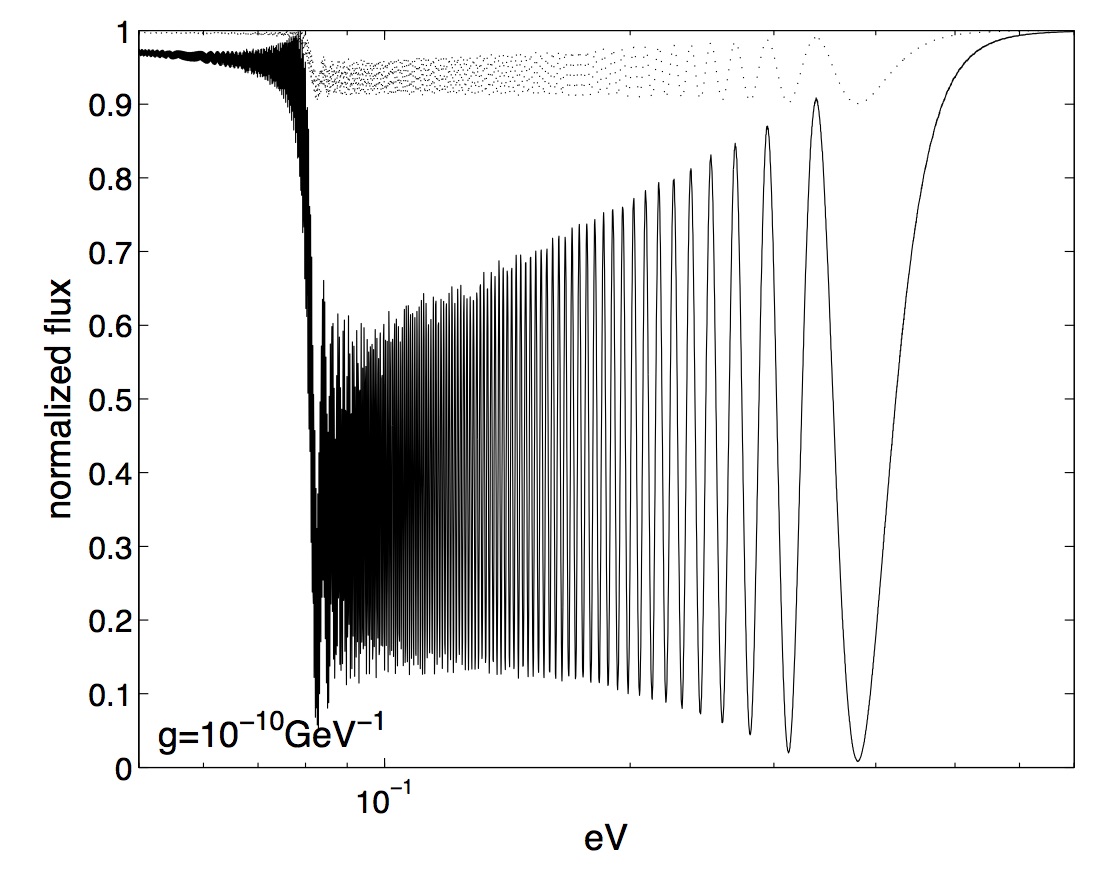Astrophysics
Astrophysical research at the HCTPA spans both theory and observations, with some of the current projects listed below.
Mapping the Environs of Supermassive Black Holes

Black holes are among the most enigmatic entities of Einstein’s theory of general relativity. At the HCTPA we focus on mapping the environments of supermassive black holes at the centers of (active) galaxies. For a brief moment in cosmological history, the immediate environs of such black holes may become visible out to large distances as the black hole devours gas, heats it up, and radiation is able to escape before the gas crosses the event horizon. Studying these extreme environments and conditions, which cannot be materialized in laboratories, opens a unique window to understanding the fundamental properties of astrophysical black holes (e.g., mass and spin), as well as the path by which they evolve over cosmic time.
Current research focuses on the mapping of the accretion disk and the broad line region in nearby (in the cosmological sense) quasars using a fully robotic telescope at the Wise Observatory and a unique set of camera and bandpass filters. This project is partly funded by the Israeli Science Foundation and the Deutsche Forschungsgemeinschaft, and is done in collaboration with researchers at Tel-Aviv University, and at Ruhr University Bochum.
Methods of Time Series Analysis and Signal Processing
 Irregularly sampled data poses many challenges to signal-processing techniques, and sets apart Astronomy from many other branches of the data sciences. For example, measuring time-delays between time series is common practice in many branches of sciences and technology (sonar and ultrasound imaging are two such examples), as well as in Astronomy. In particular, measuring the expansion rate of the universe using lensed quasars, and mapping of compact astrophysical sources using reverberation mapping techniques are contingent on the ability to quantify such time-delays in the presence of measurement gaps. Further, it is often the case in Astronomy that the physical mechanism responsible for the behavior of the time-series (i.e., source variability) is poorly known and so attempts to bridge over gaps are subject to considerable uncertainties.
Irregularly sampled data poses many challenges to signal-processing techniques, and sets apart Astronomy from many other branches of the data sciences. For example, measuring time-delays between time series is common practice in many branches of sciences and technology (sonar and ultrasound imaging are two such examples), as well as in Astronomy. In particular, measuring the expansion rate of the universe using lensed quasars, and mapping of compact astrophysical sources using reverberation mapping techniques are contingent on the ability to quantify such time-delays in the presence of measurement gaps. Further, it is often the case in Astronomy that the physical mechanism responsible for the behavior of the time-series (i.e., source variability) is poorly known and so attempts to bridge over gaps are subject to considerable uncertainties.
At the HCTPA we develop new statistical tools to improve time-series analysis of irregularly sampled data streams, and extract physically important information from a wider range of data products (e.g., broadband photometry) as Astronomy is evolving into the Big Data era. Specifically, we focus on the use of data complexity measures (or tests of randomness) for astronomical data analysis, and on multivariate correlation techniques for analyzing photometric data. This project is partly funded by the Israeli Science Foundation and the Deutsche Forschungsgemeinschaft, and is done in collaboration with research groups at Tel-Aviv University and the university of Goettingen.
Galactic outflows and the circumgalactic medium
 Galaxies assemble as the universe ages by accreting mass from their environments, forming stars, and returning a fraction of the accreted and reprocessed material back to the intergalactic space by means of outflows or tidal disruption events. While this picture of galaxy formation is qualitatively accepted, the details by which these processes ensue are very poorly known. The uncertainties that plague the field are intimately tied to larger questions pertaining to the missing baryon problem, the missing satellites problem, and the quenching of star-formation in the most massive galaxies. A major challenge in this field relates to the fact that the densities associated with gas lying at the outskirts of galaxies are extremely low (by more than 20 orders of magnitude compared to the air we breath) hence its emission signature is extremely low, and its detection difficult.
Galaxies assemble as the universe ages by accreting mass from their environments, forming stars, and returning a fraction of the accreted and reprocessed material back to the intergalactic space by means of outflows or tidal disruption events. While this picture of galaxy formation is qualitatively accepted, the details by which these processes ensue are very poorly known. The uncertainties that plague the field are intimately tied to larger questions pertaining to the missing baryon problem, the missing satellites problem, and the quenching of star-formation in the most massive galaxies. A major challenge in this field relates to the fact that the densities associated with gas lying at the outskirts of galaxies are extremely low (by more than 20 orders of magnitude compared to the air we breath) hence its emission signature is extremely low, and its detection difficult.
At the HCTPA we aim to elucidate the role of inflows and outflows in galaxy assembly and the intergalactic medium evolution by detecting such gas in absorption toward background sources of radiation. To this end we acquire data from large ground telescopes (e.g., SUBARU, VLT), as well as space observatories (the Hubble Space Telescope), and interpret the data using state-of-the-art models for dilute gas. This project is partly funded by NASA and by ESO, and is done in collaboration with colleagues at Princeton university, the Ecole Polytechnique Federale de Lausanne, and Observatoire de Geneve.
Gastrophysics

Gastrophysics in the astrophysical context refers to gas-astrophysics – understanding the physics of dilute gas in astrophysical settings - which often cannot be done in the laboratory due to the extremely low densities involved in astronomical environments and the intricate interaction of photons, charged particles, and magnetic fields. Current approaches for modeling metal-rich dilute astrophysical plasma are largely restricted to either static models, in which the gas dynamics is ignored but its microphysics is elaborately treated, or to dynamical models where the microphysics is largely ignored. Nevertheless, in various astrophysical systems, the gas microphysics (e.g., atomic cooling) can dictate its macrophysics (dynamics and multiphase structure) and vice-versa, and both facets of the problem need be treated to correctly interpret the observations, and infer the underlying physics (e.g., measure the mass entrained in various ionization stages of the interstellar medium or in the inter-galactic medium, and correctly infer abundances).
At the HCTPA we aim to marry hydrodynamics and photoionization physics (in the optically-thin limit), and study various fundamental gastrophysical problems, such as the development and freeze-out of turbulence under non-adiabatic conditions, the steady-state structure of multiphase gas near varying sources of radiation, as well as non-equilibrium phenomena in astrophysical plasma. To this end state-of-the-art numerical codes are designed and implemented using the Hive computer cluster of the faculty of natural sciences. This project is partially supported by the Israeli Science Foundation and is done with colleagues at the Technion.
Astroparticle Physics

A fundamental problem in physics is the nature of dark matter whose existence is inferred from astronomical observations (within the confines of most known theories of gravity). The universe, providing us with unique conditions that cannot be materialized anywhere on earth, offers a unique laboratory to search for dark matter particle candidates, one of which is the axion. The properties of the putative axion (and axion-like particles) are poorly constrained and yet it may provide an attractive solution also to the strong CP problem hence the considerable interest in finding it. Nevertheless, with only feeble interaction expected with the electromagnetic field, confirming its existence or refuting it for much of the relevant parameter space, is a formidable challenge to the physical community.
The HCTPA is involved in ongoing efforts to discover the putative axion by quantifying and searching for unique signatures of photon-axion coupling that occur in the presence of strong magnetic fields. In particular, a new physical effect has been identified, which is reminiscent of beam-splitting in the Stern-Gerlach experiment. This effect as well as spectral signatures of photon-axion oscillations, have been quantified, and it is found that magnetars – highly magnetized neutron stars – may prove to be promising natural laboratories for axion detection and enable axion detection down to lower levels of coupling accessible by terrestrial experiments. HCTPA people are also supporting the IAXO experiment, the successor of CAST, as the next step helioscope for axion detection. This project is done in collaboration with people at Ben-Gurion university, Columbia university, and with people at CERN.





